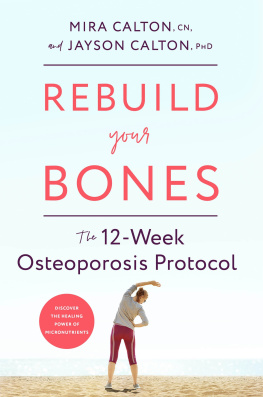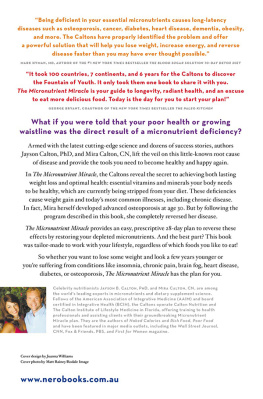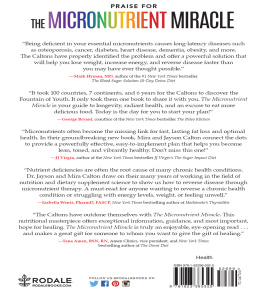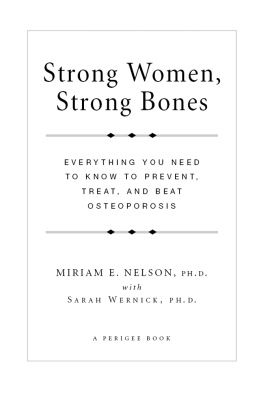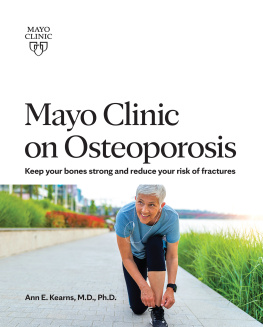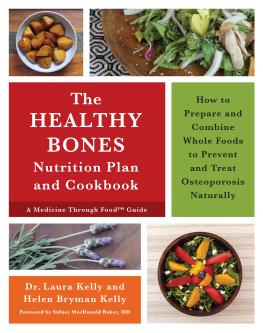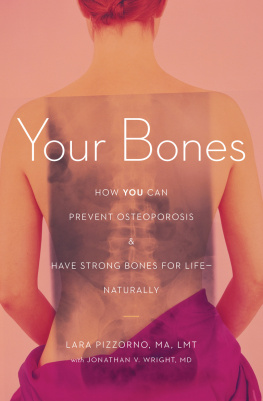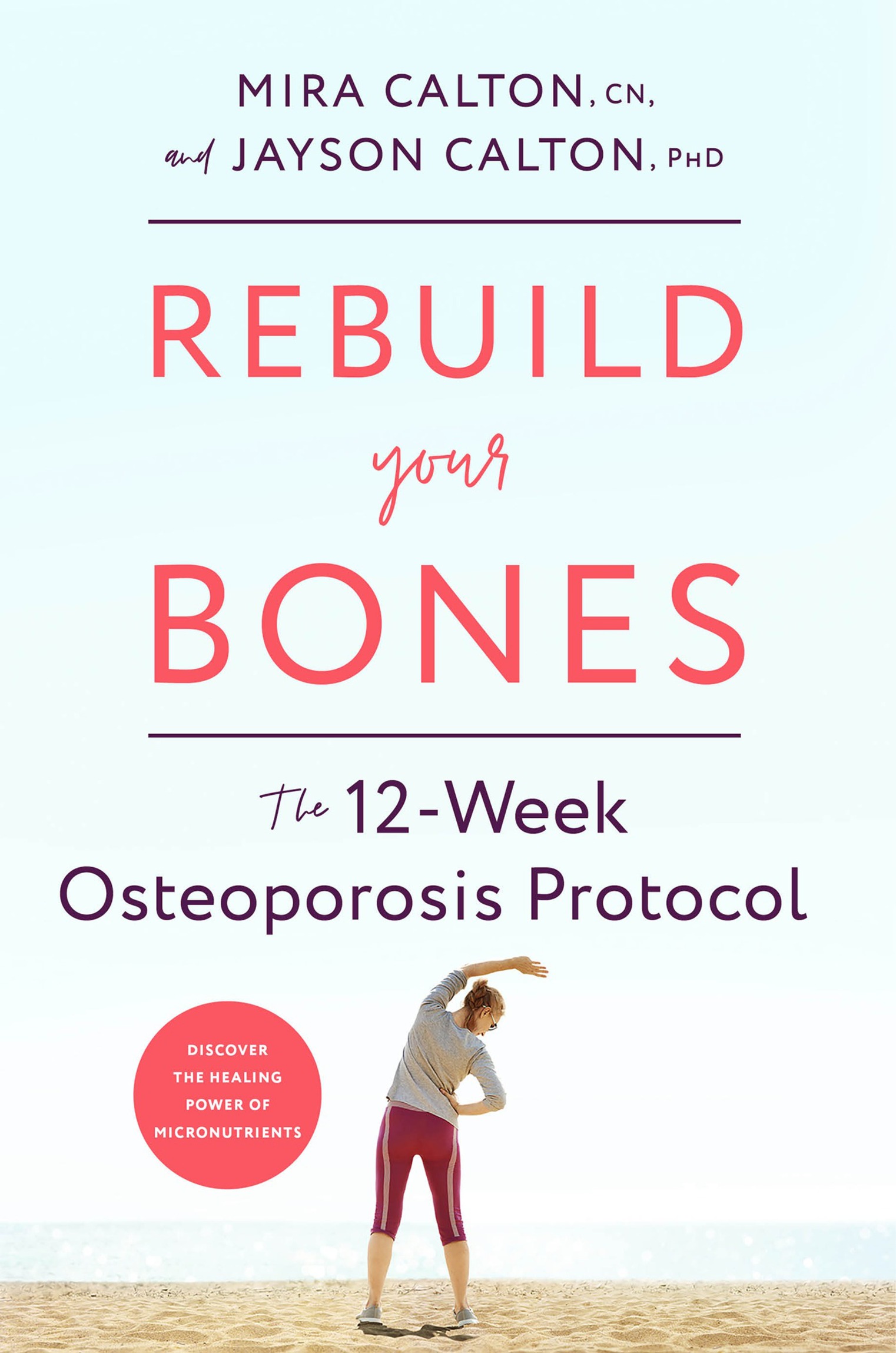All the adversity Ive had in my life, all my troubles and obstacles, have strengthened me.You may not realize it when it happens, but a kick in the teeth may be the best thing in the world for you.
We are so excited to take this journey to better bone health with you. People always ask us how we became so impassioned about micronutrients and healing osteoporosis. The truth is that weve been right where you are nowfrightened by a diagnosis but determined to heal. After years of research, trial and error, and innovation, we know the way out. And we want to share it with you.
Miras Story
When I turned thirty I was diagnosed with advanced osteoporosisand from that moment on, everything in my life changed. My bustling New York City life came screeching to a halt when I simply could no longer ignore the pain in my hips and lower back. It was time to face the fact that the pain I had been experiencing for almost a year couldnt simply be due to my high heels and long hours of stressful workI had come to the reality that something was wrong with my body.
My doctor diagnosed me with advanced osteoporosis. He told me my bones had deteriorated to those of an eighty-year-old woman.
I was only thirty years old and had been living what I believed to be a healthy lifestyle! How could this be happening? The most devastating part of all was that my doctor didnt think my bones would get any better. It seemed I was fated to live a life filled with prescription medications with a host of detrimental side effects that at best would keep my bones from getting worse.
I can honestly say that being diagnosed with osteoporosis scared me to deathand I dont scare easily. I had so many fearsfrom losing my job, to losing my independence, to being constantly in and out of the hospital with broken bones. It felt like the best days of my life were behind me. I felt useless, ashamed, embarrassed, and helpless and my future was looking like a nightmare I was terrified to live.
But I am a fighter, and if youre reading this right now, youre a fighter too. After the fear and depression passed, I wanted to face my osteoporosis head-on. I wanted the truth about what osteoporosis was, how I got it, and most importantly, how to reverse it. After spending months thoroughly researching the negative side effects of the medications I had been prescribed (which will be shared with you in Chapter 2), I decided to forgo taking medication. I took my health into my own hands and began to search for an alternative, natural treatment. However, after several years, and a small fortune later, my efforts were not proving successful. I was discouraged and was beginning to fear that my decision to say no to medication had been a mistake. I was afraid that my fight, determination, and quest for knowledge had been in vain.
Thats when fate stepped in. I was introduced to a pioneer in the field of nutrition and lifestyle medicine, known for his cutting-edge, out-of-the-box theories, who was willing to look at my osteoporosis from a completely new angle.
Jaysons Story
When I first met Mira, I was shocked to find out that such a young, vibrant woman had such an advanced form of osteoporosis. She told me that she had refused to take the medication her doctor had prescribed and instead was looking for an alternative, natural treatment for her condition, and I was immediately intrigued.
Over the last decade, I helped thousands of clients with a wide variety of health conditions and diseases through a unique low-carbohydrate (ketogenic) diet and lifestyle program that I had developed. It focused on whole foods, specific exercises, and supplementation with vitamins, minerals, essential fatty acids, and amino acids. Although much of my work had been focused on weight loss, my clients often reported back to me other amazing health benefitsfrom lower cholesterol to alleviated chronic headaches. By the time I met Mira, the program had either improved or reversed more than twenty different health conditions beyond weight loss. Because of this, I was hopeful that I could help Mira find a way to reverse her osteoporosis.
Although I knew that a ketogenic diet and a weight-bearing exercise program would be an essential part of Miras recovery, I also knew that these two factors would not be enough on their own. Mira was a special case; I suspected that severe micronutrient deficiencies had played a central role in the development of her advanced osteoporosis. We needed to determine the cause of her deficiencies and then figure out a way to successfully get her body to absorb the vitamins and minerals necessary to rebuild her bones. This forced me to shift my attention away from the macronutrient side of food (carbohydrates, fats, and proteins), which I had been focusing on for most of my career (as macronutrients are the key component to a ketogenic diet). Instead, I took a much deeper look at essential micronutrients (vitamins, minerals, essential fatty acids, and amino acids), and how they interacted with one another.
Coincidentally, when I met Mira in 2003, I had been researching a little-known discovery in supplemental science: the fact that certain minerals compete with one another for absorption sites in the gastrointestinal tract. This competition prohibited the absorption of certain minerals, leading to deficiencies. I felt that by applying this knowledge to Miras supplementation program, and by separating the minerals that were crucial for her body to absorb into multiple doses throughout the day, we could eliminate their competition for absorption pathways. Although I was unsure whether this method to increase the absorption potential of the minerals would work, it just made sense to me. I had high hopes that this new anticompetition method of supplementation would yield the benefits we were looking for.
Mira and I worked to pinpoint specific diet and lifestyle habits that may have contributed to her disease. Mira thought that her daily routine was healthy: a low-fat muffin and black coffee for breakfast, spinach salad for lunch, and steamed chicken and vegetables for dinner. So she was shocked to discover that all of these dietary habits had, in their own ways,

